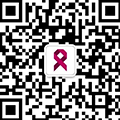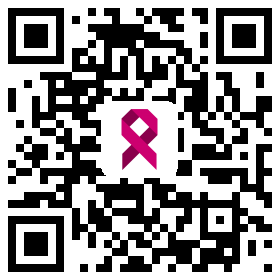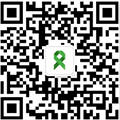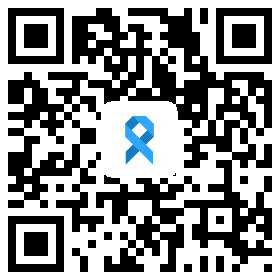
以下内容原文发布于AACR官方博客《Cancer Research Catalyst》, 中文内容仅做参考,请点击文末“阅读原文”,阅览原文内容。
很多人认为,使用战争隐喻(比如“胜利者”和“失败者”)来描述整个癌症治疗的经历并不是最好的方式。但是,在描述新型抗体药物时(新型抗体药物能够将化疗药物或电离辐射直接运载到癌细胞),除了将其描述为“针对癌症的精确制导武器”之外,还真难描述成别的。
抗体是一种大的Y形蛋白质,能够识别并结合病原体和人类细胞(包括癌细胞)上称为抗原的特定分子。抗体是机体免疫反应的重要组成部分,能够中和一些病原体(如传染性病毒),或标记其他病原体(如细菌、真菌和寄生虫)以便其他免疫细胞将其消灭。
19世纪末,早期的诺贝尔奖得主Emil von Behring开创了使用抗体作为治疗药物的先河。他发现,用接种过破伤风或白喉减毒菌株的小动物的血清可以治愈感染了致命微生物的其他动物。我们现在知道,这种血清中含有抗体,能够中和细菌产生的毒素。1891年,第一位成功接受血清治疗的人类患者是一名患有白喉的儿童。可惜多次给人类注射非人源性抗体会引起针对外源蛋白的免疫反应。由于这个原因和其他原因,对于控制白喉、破伤风和其他危险的感染疾病,疫苗接种成了更好的方法,这样接种的人就能够产生人类的抗体和免疫记忆。
了解更多内容,请阅读以下原文。
Taking Aim at Cancer with Antibody Drugs
By Cancer Today Staff
Guest Post by William G. Nelson, MD, PhD, Editor-in-Chief, Cancer Today
Many argue that warfare metaphors, with winners and losers, may not be the best way to imagine the entirety of the cancer experience. With that in mind, the new antibody drugs able to carry chemotherapy or ionizing radiation directly to cancer cells are hard to describe as anything other than precision-guided weapons against cancer.
Antibodies are large Y-shaped proteins that can discriminate and bind to specific molecules called antigens on pathogens and human cells, including cancer cells. These proteins are a vital part of the body’s immune response, able to neutralize some pathogens—like infectious viruses—or mark other pathogens—like bacteria, fungi, and parasites—for destruction by other immune cells.
Emil von Behring, an early Nobel Prize winner, pioneered the use of antibodies as therapeutic agents in the late 19th century. He learned that blood serum from small animals vaccinated with attenuated forms of the bacteria causing tetanus or diphtheria could cure other animals infected with virulent microorganisms. We now know the blood serum contained antibodies able to neutralize toxins made by the bacteria. The first successful treatment of a human with blood serum involved a child suffering with diphtheria in 1891. Unfortunately, repeated administration of nonhuman antibodies can engender an immune response against the foreign proteins. For this and other reasons, control of diphtheria, tetanus, and other dangerous infections was better accomplished by vaccination, leading to production of human antibodies and immune memory in those vaccinated.
In 1975, Georges Köhler and César Milstein, who were also awarded a Nobel Prize, described cloning individual B cells to produce antibodies specific to an antigen, a technical advance that revolutionized the use of antibodies as therapeutic agents. The first anticancer antibody drugs, Rituxan (rituximab) for lymphomas and Herceptin (trastuzumab) for HER2-positive breast cancers, were approved by the U.S. Food and Drug Administration (FDA) in the late 1990s. Now, genetic engineering can create antibodies that are remarkably human-like, avoiding anti-antibody responses seen with nonhuman antibodies. Currently, dozens of “humanized” antibody drugs are used for cancer treatment. The ability to rapidly create antibody drugs was on display during the COVID-19 pandemic, when several antibody drug preparations became available to treat serious infections.
Anticancer antibodies have increasingly served as the targeting systems for chemotherapy drugs or radio emitters. The resultant antibody-drug conjugates (ADCs) or radioimmunotherapies (RITs) resemble smart bombs: The antibody delivers the chemotherapy drug or radio-emitter payloads to the cancer cells, ensuring the cancer cells are killed with minimal damage to surrounding normal cells and tissues.
Early versions of this strategy proved challenging. To work optimally, the drugs or radio emitters need to firmly attach to antibodies to reduce harm to normal cells and tissues but drop off upon binding to the cancer cells. Now that this has been accomplished, a rapidly increasing number of ADCs and RITs are available for use or are being evaluated in clinical trials. These agents have performed impressively. For example, with Herceptin as a guidance system aimed at HER2, Kadcyla (ado-trastuzumab emtansine) earned FDA approval in 2013 as a treatment for breast cancer with high HER2 levels. In summer 2022, the FDA approved Enhertu (fam-trasutuzumab deruxtecan-nxki) for treating breast cancer with lower HER2 levels.
In a lecture delivered more than 100 years ago, Paul Ehrlich, a collaborator of Emil von Behring, and also a Nobel laureate, proffered the idea that microbial pathogens could be killed without any harm to the human body, using an agent he termed Zauberkugel (magic bullet). With apologies for using violence and warfare metaphors, the new ADCs and RITs may indeed be magic bullets against cancer.
William G. Nelson, MD, PhD, is the editor-in-chief of Cancer Today, the quarterly magazine for cancer patients, survivors, and caregivers published by the American Association for Cancer Research. Nelson is the Marion I. Knott professor of oncology and director of the Sidney Kimmel Comprehensive Cancer Center at Johns Hopkins in Baltimore. You can read his complete column in the winter 2022/2023 issue of Cancer Today.
阅读更多内容,请点击“阅读原文”
AACR
结尾
责任编辑:肿瘤资讯-Bree
排版编辑:肿瘤资讯-Astrid
免责声明
本文仅供专业人士参看,文中内容仅代表癌症研究UPDATE立场与观点,不代表肿瘤资讯平台意见,且肿瘤资讯并不承担任何连带责任。若有任何侵权问题,请联系删除。












 苏公网安备32059002004080号
苏公网安备32059002004080号


